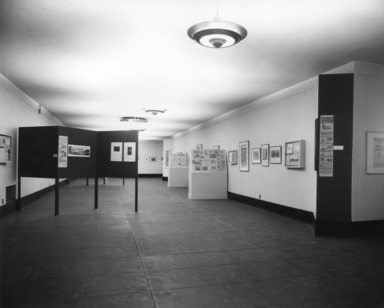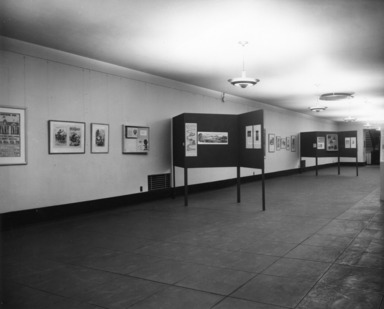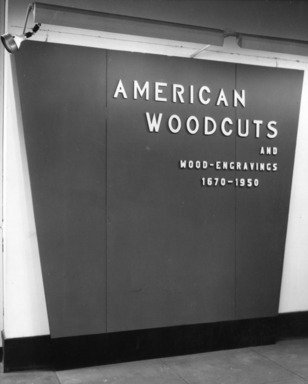

American Woodcuts, 1670-1950, November 09, 1950 through January 09, 1951 (Image: PDP_E1950i001.jpg Brooklyn Museum photograph, 1950)

American Woodcuts, 1670-1950, November 09, 1950 through January 09, 1951 (Image: PDP_E1950i002.jpg Brooklyn Museum photograph, 1950)
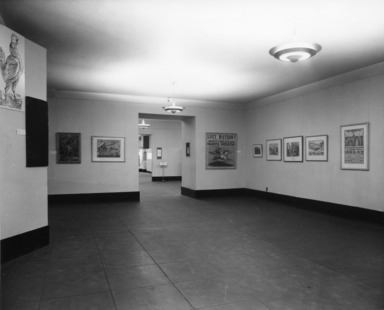
American Woodcuts, 1670-1950, November 09, 1950 through January 09, 1951 (Image: PDP_E1950i003.jpg Brooklyn Museum photograph, 1950)
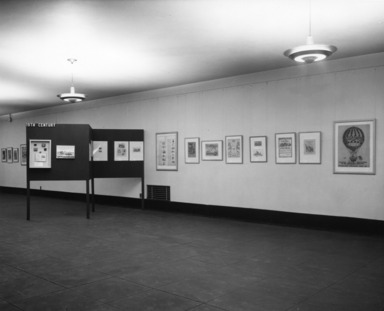
American Woodcuts, 1670-1950, November 09, 1950 through January 09, 1951 (Image: PDP_E1950i004.jpg Brooklyn Museum photograph, 1950)

American Woodcuts, 1670-1950, November 09, 1950 through January 09, 1951 (Image: PDP_E1950i005.jpg Brooklyn Museum photograph, 1950)
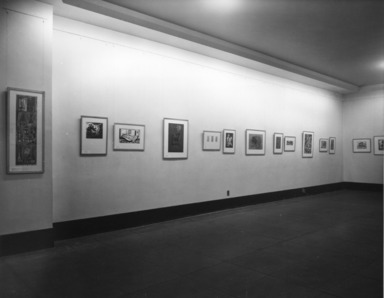
American Woodcuts, 1670-1950, November 09, 1950 through January 09, 1951 (Image: PDP_E1950i006.jpg Brooklyn Museum photograph, 1950)
American Woodcuts, 1670-1950
-
November 9, 1950
WHAT:
An exhibition of woodcuts and wood-engravings produced by artists in the United States from 1670 to 1950. This is the first time that a comprehensive survey of the material has been exhibited. Approximately two hundred examples are shown.
WHERE: The Brooklyn Museum Print Galleries. Second floor.
WHEN:
November 6th -- Press Preview 10 a.m. to 5 p.m.
November 8th -- Private opening
November 9th -- Open to the public
January 7th -- Closing date
MATERIAL:
The woodcut in the United States tells a dramatic story of two hundred and eighty years of graphic communication. Beginning in 1670, long before the days of the power press, the woodcut and type-metal cut were the common means of illustrating printed matter. Newspapers, posters, hand bills, almanacs and books of the times carry many pictures, painstakingly carved on wood. News events, political stories, catastrophes -- now subjects for the quick eye of the camera -- were often shown in woodcuts and wood-engravings. A truly popular art, they were an impressive means of emphasizing the banner headlines of their day.
To the general public, the early American print seems to begin with the lithographs of Currier and Ives. It is to be remembered that, when compared with early woodcuts and wood-engravings, Currier and Ives’ lithographs are a very late expression. They came into existence only a few years before the Civil War. Although little known, the woodcut was used in relief printing in America some two hundred years earlier.
CATALOGUE OF THE EXHIBITION:
A monograph and catalogue (approximately fifty pages and thirty illustrations) by the Museum’s Curator of Prints, Una E. Johnson, accompanies the exhibition. As this presentation amply shows, the woodcut and wood-engraving in the United States have a long and flourishing history. Their vigorous development and lively diversity are reviewed here for the first time. Price of catalogue, $l.00 plus postage.
Brooklyn Museum Archives. Records of the Department of Public Information. Press releases, 1947 - 1952. 10-12/1950, 111.
View Original -
November 9, 1950
WHAT: An exhibition of woodcuts and wood-engravings produced by artists in the United States from 1670 to 1950. This is the first time that a comprehensive survey of the material has been exhibited. Approximately two hundred examples are shown.
WHERE: The Brooklyn Museum Print Galleries. Second floor.
WHEN: November 6th — Press Preview 10 a.m. to 5 p.m.
November 8th — Private opening
November 9th — Open to the public
January 7th — Closing date
MATERIAL: The woodcut in the United States tells a dramatic story of two hundred and eighty years of graphic communication. Beginning in 1670, long before the days of the power press, the woodcut and type-metal cut were the common means of illustrating printed matter. Newspapers, posters, hand bills, almanacs and books of the times carry many pictures, painstakingly carved on wood. News events, political stories, catastrophes — now subjects for the quick eye of the camera — were often shown in woodcuts and wood-engravings. A truly popular art, they were an impressive means of emphasizing the banner headlines of their day.
To the general public, the early American print seems to begin with the lithographs of Currier and Ives. It is to be remembered that, when compared with early woodcuts and wood-engravings, Currier and Ives’ lithographs are a very late expression. They came into existence only a few years before the Civil War. Although little known, the woodcut was used in relief printing in Arnerica some two hundred years earlier.
CATALOGUE OF EXHIBITION: A monograph and catalogue (approximately fifty pages and thirty illustrations) by the Museum’s Curator of Prints, Una E. Johnson, accompanies the exhibition. As this presentation amply shows, the woodcut and wood-engraving in the United States have a long and flourishing history. Their vigorous development and lively diversity are reviewed here for the first time. Price of catalogue, $1.00 plus postage.
Brooklyn Museum Archives. Records of the Department of Public Information. Press releases, 1947 - 1952. 10-12/1950, 084.
View Original
